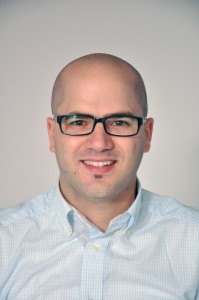
Dr. Haitham Amal received his B.Sc.Pharm degree from the Pharmacy School, Faculty of Medicine, at the Hebrew University in Jerusalem in 2007. He received his M.Sc. (Magna cum laude) in Neuroscience and Pharmacology from the Faculty of Medicine, Tel-Aviv university in 2009.
In 2015, he completed his Ph.D. entitled “The Unique Chemical Signature Of Cancer In Exhaled Breath” from the Department of Chemical Engineering and Russell Berrie Nanotechnology Institute, Technion, Haifa, Israel under the supervision of Prof. Hossam Haick. During his Ph.D. Haitham received several fellowships: The Council for Higher Education fellowship for three consecutive years; Ministry of Science, Technology, and Space travel Grant; Merit Award from ISOBM, Research Excellence Award by the Technion and others.
He has published several distinguished works in prestigious scientific journals. The last paper was published in the prestigious GUT paper (the leading paper in gastroenterology field), This paper has been recommended in F1000Prime as being of special significance in its field. Haitham has lectured Pharmacology for the TEAMS program in the Medicine school in the Technion and was teaching assistant in the Nano_Sensors course.
Currently, Haitham is a Postdoctoral Fellow at MIT in the Department of Biological Engineering in the Tannenbaum SR labs. He has received the MIT-TECHNION Postdoctoral fellowship and the Council for Higher Education Postdoctoral Fellowship.
Currently, Haitham is leading different projects at MIT in collaboration with the McGovern Institute, Broad Institute and the Mechanical Engineering Department. He is using different OMICS techniques to understand the mechanism of several neurological diseases (Autism, Alzheimer and Parkinson). Furthermore, he is trying to reveal the pathological signaling pathways and trafficking in the Neuron. Haitham is also involved in the DARPA project, “Human Body On A Chip” which is lead by several groups. This big project is trying to integrate TEN different organs on one chip; The state-of-the-art of this project is that it, for the first time ever, will deliver a novel way for the research/industrial community to have a human physiome on a chip that can be translated to biopharmaceutical research.
